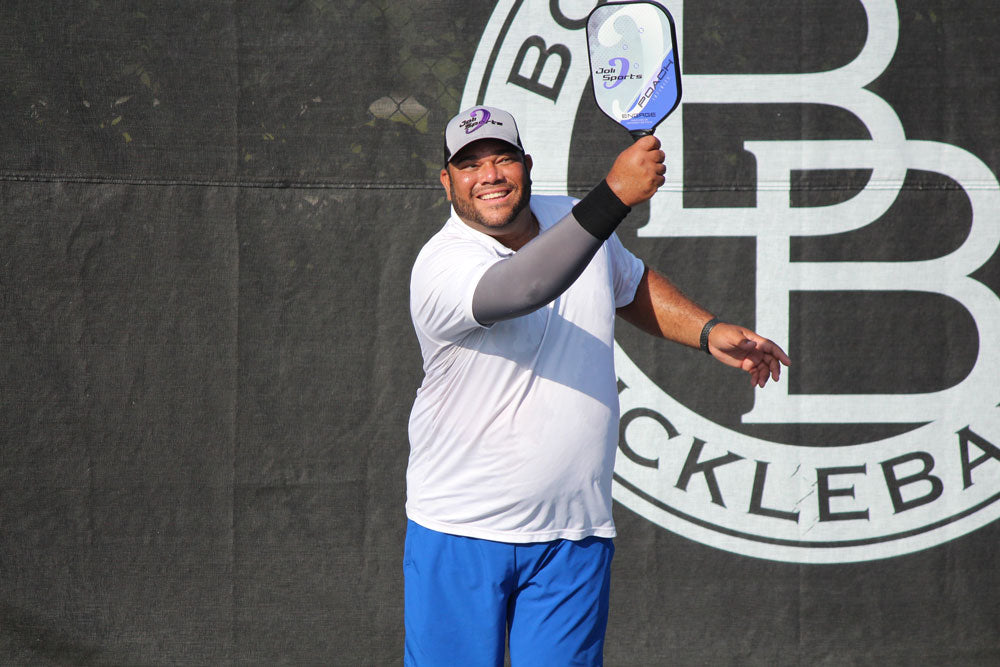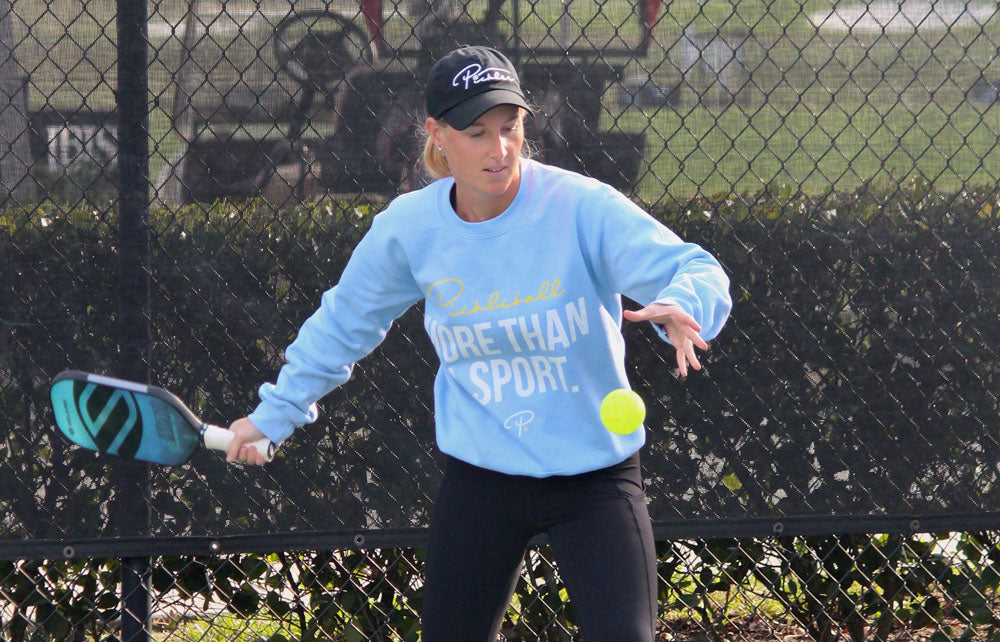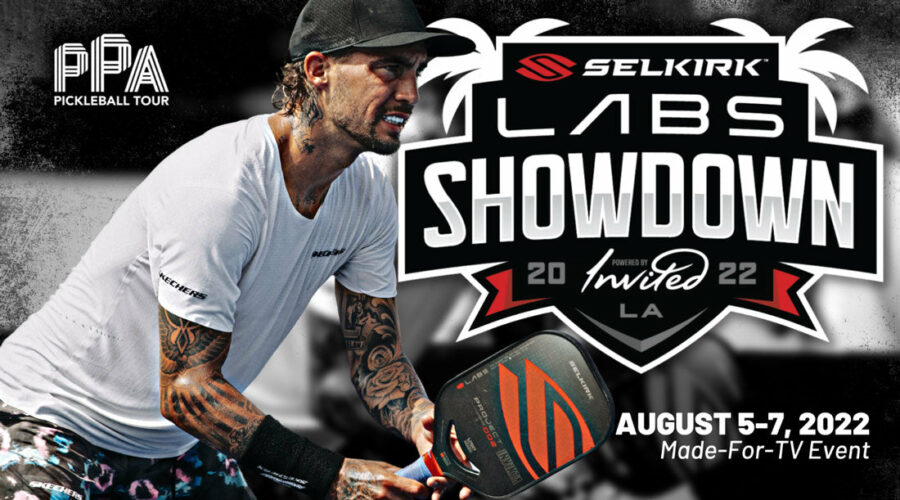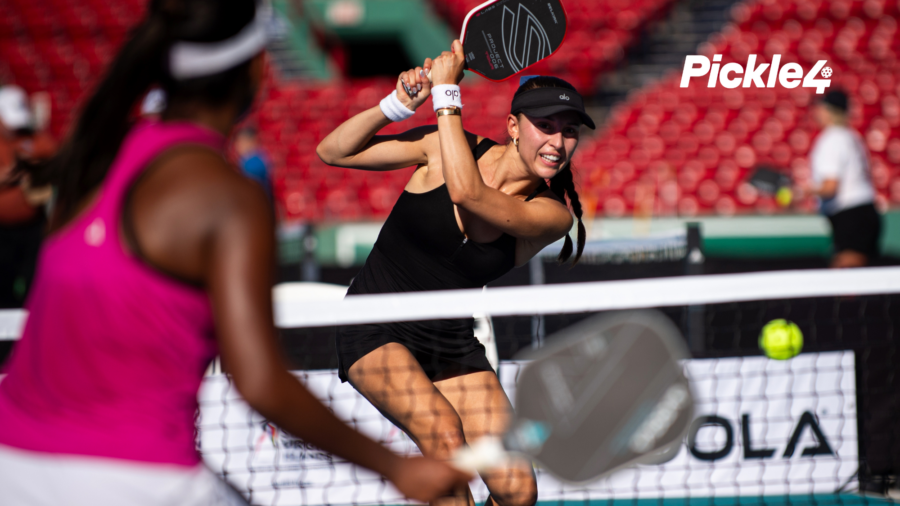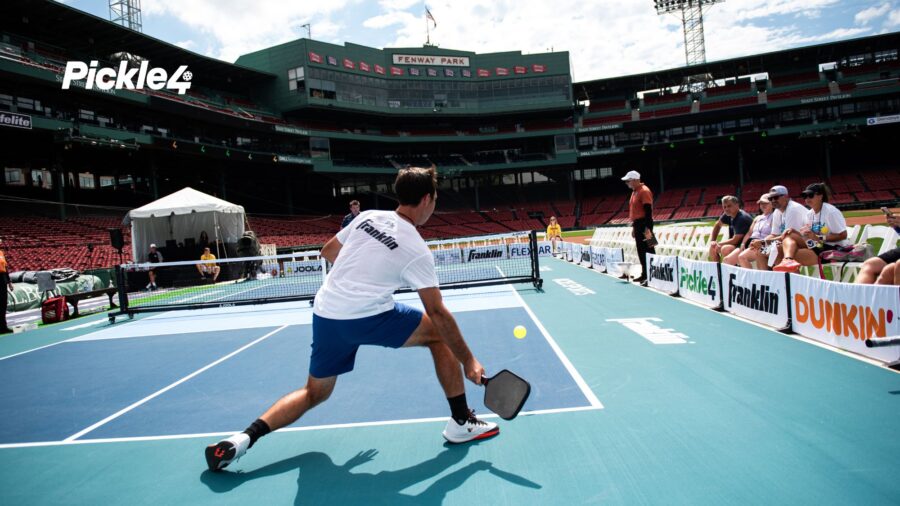At the beginning of the 2021 calendar year, USA Pickleball made changes to the rules of pickleball, just like they do every year. One such change was to add “After the serve” to the rule that prohibits an intentional carry of the pickleball. These three words permitted players to carry on the serve, such that players concerned with COVID would not have to touch the pickleball to serve. They could pick the pickleball up with their paddle, flick the pickleball into the air using their paddle, and serve without ever touching the ball.
However, these three words also permitted what would become known as the “Chainsaw” serve (where you use the paddle and your hand to impart spin on the pickleball before making contact on the serve), made popular by pro pickleball player, Zane Navratil. The Chainsaw serve made quite a stir in 2021 and ricocheted Navratil to the top of the podium, particularly in pro men’s singles.
Prior to the 2021 calendar year, pickleball pro, Tyson McGuffin was known for his powerful serve, while another pickleball pro, Morgan Evans was known for his one-handed spin serve. These two were at the forefront of pushing the limits of a serve. The unintended consequences of the 2021 rule change were a surge in other players joining McGuffin and Evans in pushing the limits of the serve, which notably included Navratil and his Chainsaw serve (and even Dekel Bar and his powerful, one-toed push off serve).
The Chainsaw serve was short-lived. USA Pickleball quickly closed the loophole in the 2022 calendar year by limiting serves to one-handed releases that are visible to the referee and receiver. But, USA Pickleball did not close the door on spin serves entirely. This meant that one-handed spin serves—like Morgan Evans is known for—were safe… for now.
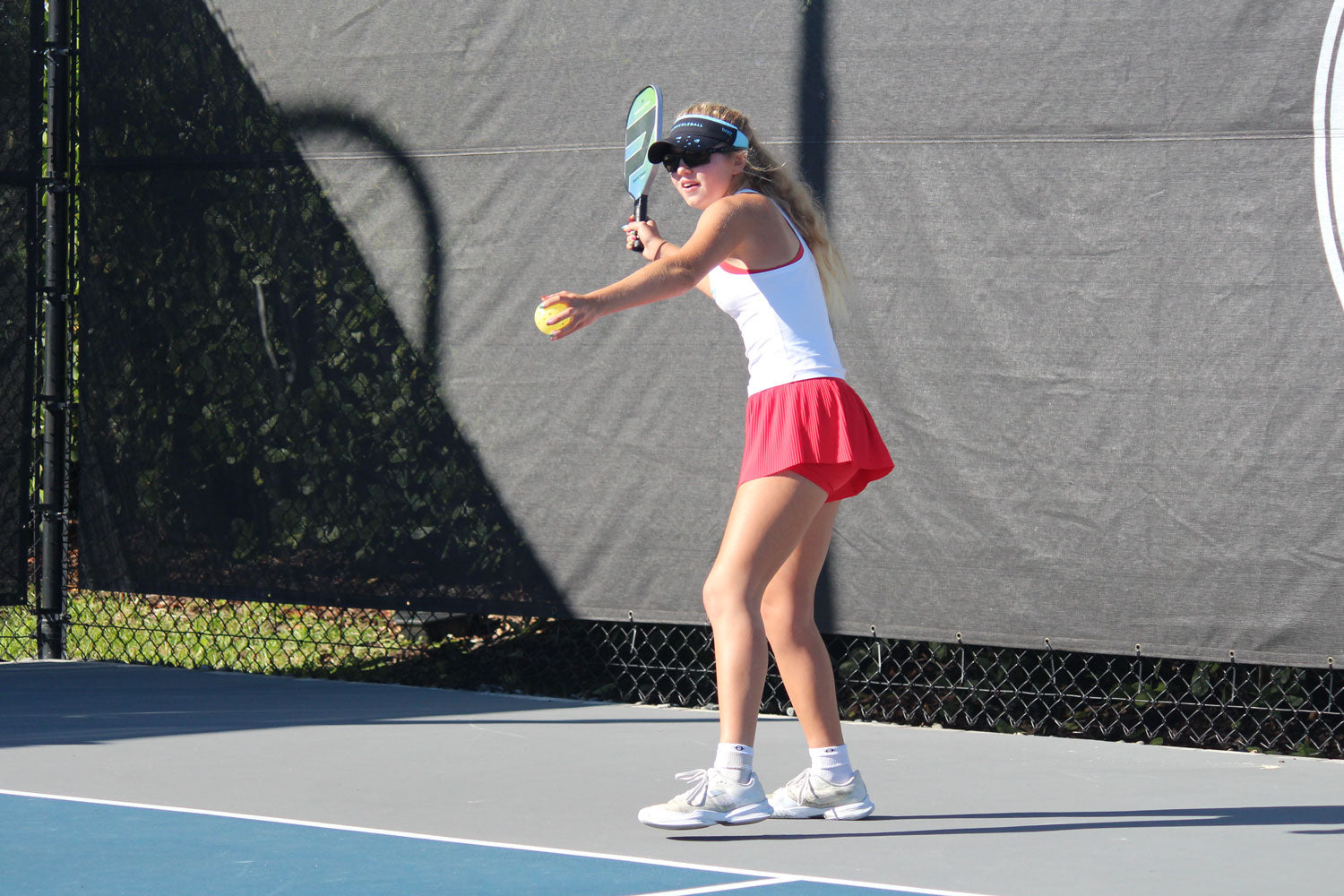
As an aside, USA Pickleball provided the following reasoning for its decision to ban the Chainsaw serve, but protect the one-handed spin serve:
- Unlike the ‘Chainsaw’ serve, which came about quite by accident, the onehanded spin serve has been available to every player since 1965. There has never been any restriction on pre-serve spin in the sport. That fact had significant bearing on this rule.
- We quickly realized we can’t write a rule that says, “No added spin can be provided to the ball before the serve.” That is difficult to enforce because every transfer of the ball from one hand to the paddle will cause some rotational velocity of the ball. To eliminate the one-handed spin-serve, we would have to adopt something similar to the open palm presentation used in table tennis, if we wanted to remove as much referee judgment as possible. Students of rules will realize several referee judgment-related rules have been removed from the Rulebook over the past two years. Adding words such as ‘no manipulation’ or ‘no rotation of the ball’ pre-serve are largely unenforceable with any degree of consistency among players or referees. Eventually, putting a table-tennis type pre-serve requirement in place was judged as a bridge too far at this stage, given number 1 above, and the fact that if we adopted it, almost every player in the world would have to modify their serve routine. There is a reluctance to do that, which, by the way, is the reason the drop serve isn’t the only serve allowed in the sport. That, too, would be a transformational change in play.
- The one-handed spin-serve is considered a little more difficult to adopt and perfect so while many speculate on this, we just don’t know at this point how deep the serve will penetrate the sport, how quickly, or how effective it will be across the player spectrum.
- It’s important to allow for some degree of innovation in the sport, but at the same time make sure one type of shot or style of play doesn’t dominate the sport, especially for the social and recreational player.
- Accordingly, we are adopting a wait and see approach.
Notably, USA Pickleball said they will “wait and see.” But, other pickleball organizations, like the Pro Pickleball Association (PPA), have banned any spin serve at the pro pickleball levels.
So, what does this mean for pickleball players trying to improve their serve and gain a competitive advantage? If you are looking to gain a competitive advantage on your serve, where should you put your time and energy? Should you put this time and energy into mastering the one-handed spin serve? Into developing more power on your serve? Or, maybe even stronger placement with your serve? Does it differ for pro pickleball players compared to amateurs?
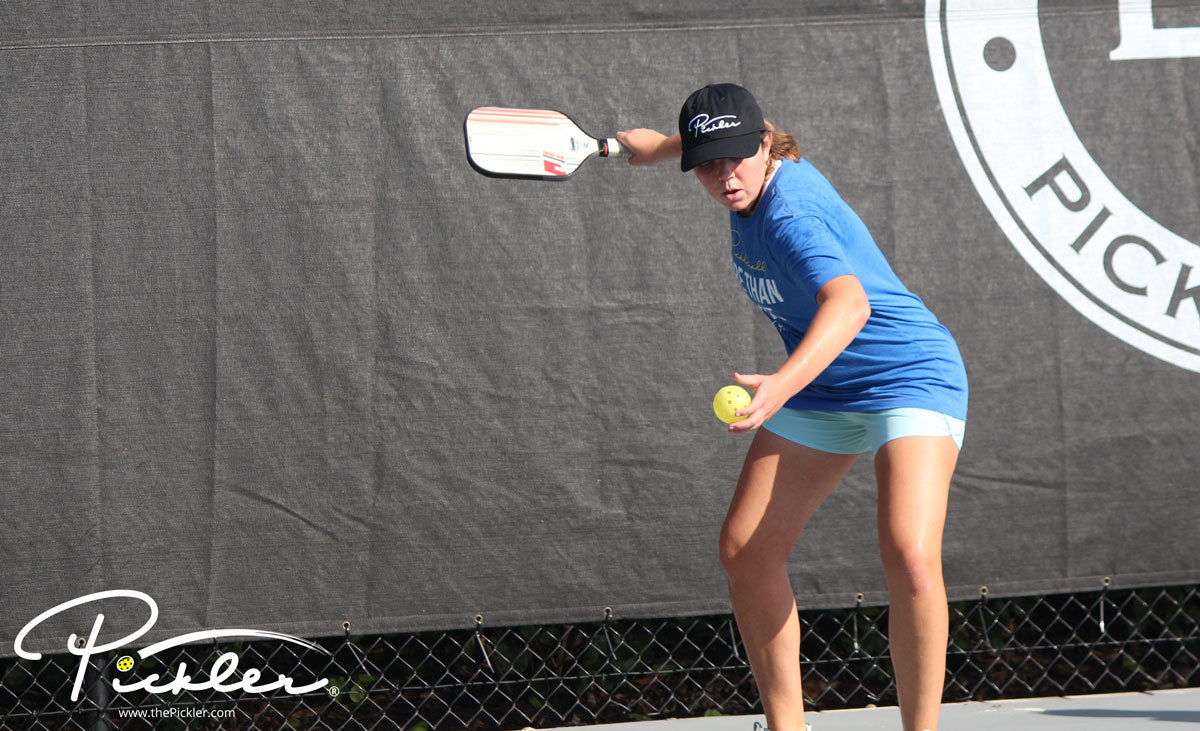
We contend that you should focus on (1) power and (2) placement. These two characteristics on a serve are here to stay and for you to improve upon for the long run. In contrast, the spin serve, which has already been limited to one hand, is still at risk, may be eliminated (even within the next year), and may be wasted effort for you to perfect.
The one-handed spin serve is at risk because of USA Pickleball’s “wait and see approach,” which could come to a close at the end of this 2022 calendar year. While the one-handed spin serve has been around for a long time, more pickleball players are using the serve as a weapon thanks to the innovative trailblazing from Navratil in 2021.
The premise of the serve in the sport of pickleball is to simply start a rally, not for the serve to be used as a weapon. The serving team is not, theoretically, supposed to have the advantage. This is clear because the serving team must serve the pickleball underhand, must let the return bounce, and is at a disadvantage on the third shot. Due to this historical purpose and delicate balance between the serving team and the receiving team, USA Pickleball could go all the way and remove any intentional spin on the serve (kind of like table tennis).
Time will tell whether serving with spin is a strategy that is here to stay and will be permitted by the rules. However, if you want the safe bet of where to put your time and energy on the serve, it will be to focus on power and placement—which is true of pickleball players at all levels (both pros and amateurs alike). You may even want to learn how to mix up your serves in terms of speed, placement, height (lob serve, anyone?), and spin upon contact with your paddle (rather than with your one-handed toss).
